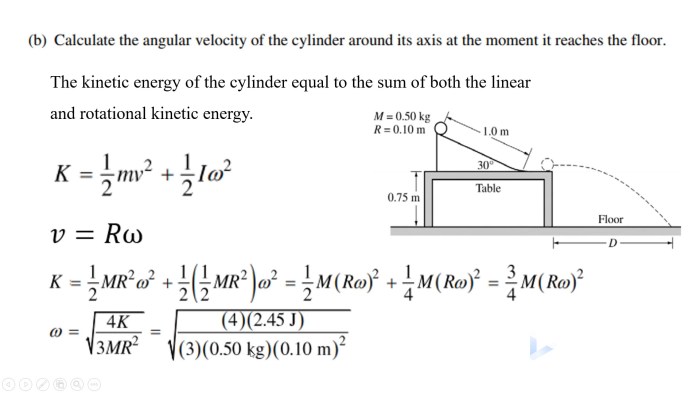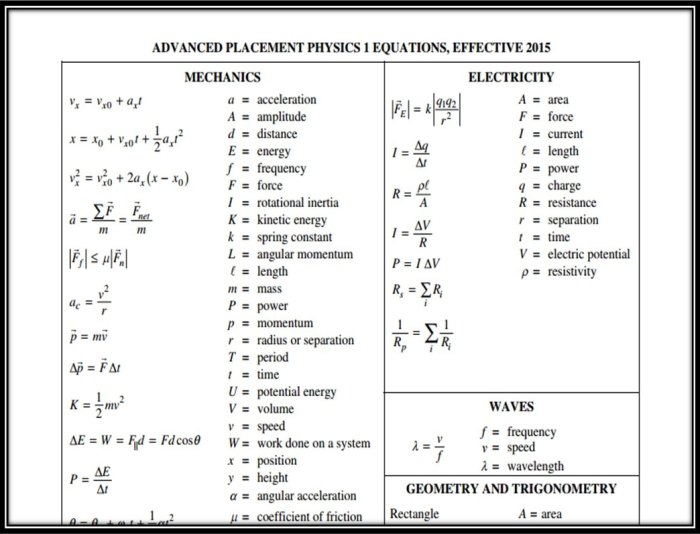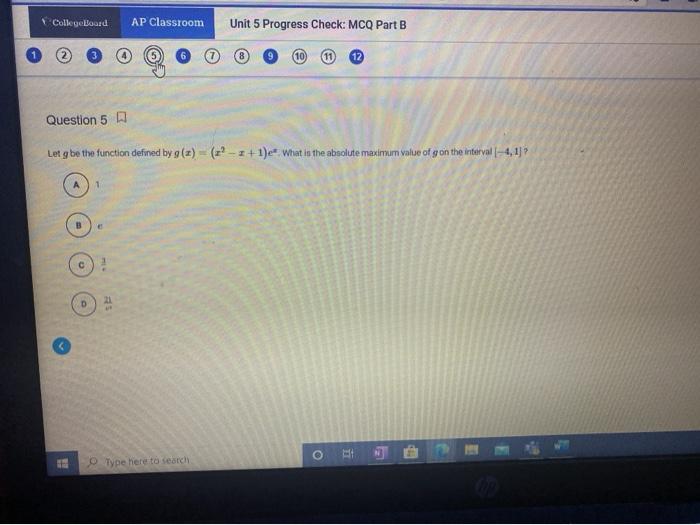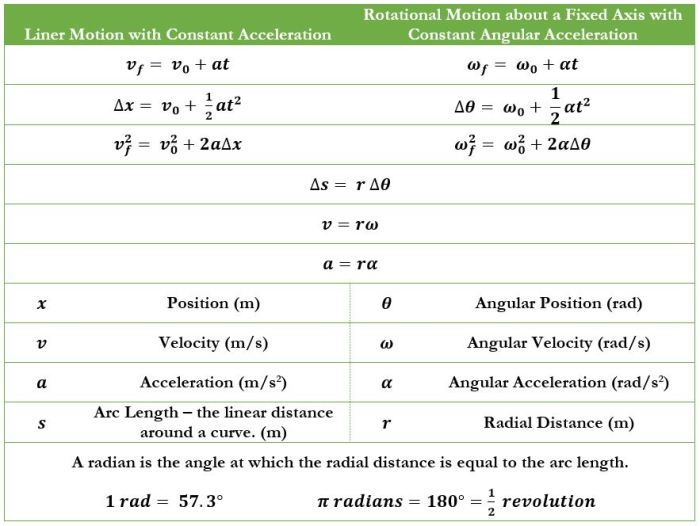Ap physics 1 unit 2 mcq – Embark on an engaging journey through AP Physics 1 Unit 2 with our meticulously curated MCQs. These questions delve into fundamental concepts, empowering you to excel in the exam and beyond.
Our comprehensive guide provides an in-depth exploration of each concept, ensuring a thorough understanding of the subject matter.
Introduction

The AP Physics 1 Unit 2 MCQ is a standardized test designed to assess your understanding of the fundamental concepts of motion, dynamics, and energy.
This unit is crucial as it forms the foundation for your future studies in physics and other STEM disciplines. A solid grasp of these concepts will equip you with the necessary problem-solving and critical-thinking skills to excel in these fields.
Newton’s Laws of Motion
Newton’s laws of motion are the cornerstone of classical mechanics. They describe the relationship between an object’s motion and the forces acting upon it.
- Newton’s First Law (Law of Inertia):An object at rest stays at rest, and an object in motion stays in motion with the same speed and in the same direction unless acted upon by an unbalanced force.
- Newton’s Second Law (Law of Acceleration):The acceleration of an object is directly proportional to the net force acting on it and inversely proportional to its mass.
- Newton’s Third Law (Law of Action-Reaction):For every action, there is an equal and opposite reaction.
Concepts Covered
The AP Physics 1 Unit 2 MCQ covers a wide range of fundamental concepts in kinematics, including:
- Motion in One Dimension
- Motion in Two Dimensions
- Newton’s Laws of Motion
- Circular Motion and Centripetal Force
- Momentum and Impulse
- Work and Energy
Motion in One Dimension
This focuses on the description of motion along a straight line. Concepts covered include:
- Displacement, velocity, and acceleration
- Constant velocity motion
- Constant acceleration motion
- Free-fall motion
Motion in Two Dimensions
This extends the concepts of motion to two dimensions. Topics include:
- Vector representation of displacement, velocity, and acceleration
- Projectile motion
- Uniform circular motion
Newton’s Laws of Motion
Newton’s three laws of motion provide a framework for understanding the relationship between forces and motion. Key concepts include:
- Inertia
- Newton’s first law
- Newton’s second law
- Newton’s third law
Circular Motion and Centripetal Force
This explores the concepts of circular motion and the forces that keep objects moving in a circular path. Topics include:
- Centripetal acceleration
- Centripetal force
- Applications of circular motion
Momentum and Impulse
Momentum and impulse are two important concepts in physics that describe the motion of objects. Key concepts include:
- Momentum
- Impulse
- Conservation of momentum
Work and Energy
Work and energy are closely related concepts that describe the transfer of energy between objects. Topics include:
- Work
- Energy
- Conservation of energy
Sample Questions: Ap Physics 1 Unit 2 Mcq

Mastering the concepts of Unit 2 is crucial, and practicing with sample MCQ questions is an effective way to gauge your understanding. Let’s delve into a variety of questions that cover the unit’s key concepts, complete with answer choices and detailed explanations.
Kinematic Equations
- A car accelerates uniformly from rest at a rate of 2 m/s 2for 10 seconds. What is its final velocity?
- A. 10 m/s
- B. 20 m/s
- C. 30 m/s
- D. 40 m/s
Answer: B. 20 m/s
Explanation:Using the equation v = u + at, where u is the initial velocity (0 m/s), a is the acceleration (2 m/s 2), and t is the time (10 seconds), we get v = 0 + 2 – 10 = 20 m/s.
Dynamics
- A block of mass 5 kg is pushed with a force of 10 N. What is its acceleration?
- A. 0.5 m/s 2
- B. 1 m/s 2
- C. 2 m/s 2
- D. 5 m/s 2
Answer: B. 1 m/s2
Explanation:According to Newton’s second law, F = ma, where F is the force (10 N), m is the mass (5 kg), and a is the acceleration. Solving for a, we get a = F/m = 10 N / 5 kg = 1 m/s 2.
Circular Motion
- A car travels around a circular track of radius 50 m at a constant speed of 10 m/s. What is its centripetal acceleration?
- A. 0.2 m/s 2
- B. 1 m/s 2
- C. 2 m/s 2
- D. 5 m/s 2
Answer: A. 0.2 m/s2
Explanation:Centripetal acceleration is given by a = v 2/r, where v is the speed (10 m/s) and r is the radius (50 m). Plugging in the values, we get a = (10 m/s) 2/ 50 m = 0.2 m/s 2.
Test-Taking Strategies
Mastering the art of test-taking is crucial for success on the AP Physics 1 Unit 2 MCQ. Effective strategies can help you manage time wisely, identify key information, and eliminate incorrect answers, boosting your confidence and performance.
Time Management
- Prioritize Questions:Start with the questions you find easiest to answer. This will build your confidence and save time for more challenging ones.
- Guess and Mark:If you’re unsure about an answer, make an educated guess and mark it for later review. This prevents you from wasting time on questions you’re not sure about.
- Manage Time Wisely:Allocate a specific amount of time to each question and stick to it. Don’t spend too much time on one question, as it could jeopardize your overall performance.
Identifying Key Information
- Read Carefully:Read each question and answer choice thoroughly. Pay attention to s and specific details that may provide clues to the correct answer.
- Identify Relationships:Look for relationships between concepts and variables mentioned in the question. This can help you narrow down the possible answers.
- Use Context:Consider the context of the question. This may provide additional information that can help you eliminate incorrect answers.
Eliminating Incorrect Answers, Ap physics 1 unit 2 mcq
- Rule Out Obvious Wrongs:Eliminate answers that are clearly incorrect or contradict basic physics principles.
- Look for Common Errors:Identify common errors that students often make and check if the answer choices contain any of them.
- Use Process of Elimination:If you can’t identify the correct answer immediately, eliminate the ones you know are incorrect. This increases your chances of selecting the right answer.
Preparation Tips

Preparing for the AP Physics 1 Unit 2 MCQ exam requires a solid understanding of the concepts covered and effective practice.
Study Resources
-
-*Textbook
Utilize your AP Physics 1 textbook as a comprehensive resource for foundational knowledge and concept reinforcement.
-*Online Videos
Explore reputable educational websites and platforms for engaging video lectures and demonstrations.
-*Khan Academy
AP Physics 1 Unit 2 MCQ can be challenging, but with the right resources, you can ace it. If you’re looking for some extra help, check out the Pi Kappa Phi Texas A&M website. They have a wealth of resources that can help you understand the concepts and prepare for the exam.
And remember, practice makes perfect, so keep practicing those AP Physics 1 Unit 2 MCQ questions!
Access free online lessons, practice exercises, and videos covering all essential concepts.
-*Past AP Exams
Analyze released AP Physics 1 Unit 2 exams to familiarize yourself with the exam format and question styles.
Real-World Applications

The concepts covered in AP Physics 1 Unit 2 MCQ have extensive applications in the real world, shaping various fields of science, engineering, and technology. These concepts help us understand and solve problems in areas such as:
- Motion analysis: Predicting trajectories of projectiles, designing amusement park rides, and optimizing sports performance
- Force and dynamics: Designing bridges, analyzing car crashes, and understanding the motion of celestial bodies
- Work and energy: Determining the efficiency of machines, calculating energy consumption, and designing power plants
li>Momentum and collisions: Analyzing car crashes, designing safety equipment, and studying subatomic particle interactions
Motion Analysis in Sports
The principles of motion analysis play a crucial role in sports, enabling athletes and coaches to optimize performance and technique. By understanding projectile motion, athletes can calculate the trajectory of a thrown ball or a shot put, adjusting their release angle and velocity to achieve maximum distance or accuracy.
For instance, in baseball, pitchers use the principles of projectile motion to control the speed, trajectory, and spin of their pitches, making them more effective at striking out batters.
Questions Often Asked
What is the purpose of AP Physics 1 Unit 2 MCQs?
These MCQs assess your understanding of key concepts covered in Unit 2, preparing you for the AP exam and real-world applications.
How do I effectively prepare for the AP Physics 1 Unit 2 MCQ exam?
Utilize our comprehensive guide, practice regularly, and seek support from teachers or tutors as needed.